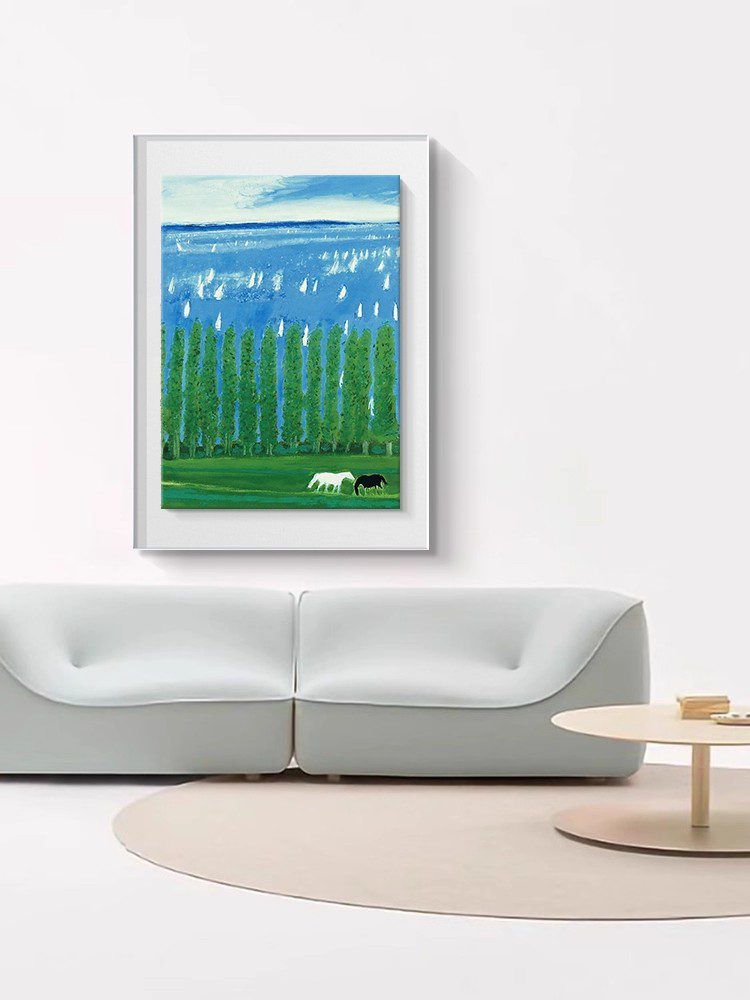Navigating the Risks of Investing in Hand-Painted Oil Artworks: Key Considerations for Collectors
Investing in hand-painted oil paintings can be a rewarding venture, blending aesthetic appreciation with potential financial growth. However, unlike traditional assets such as stocks or real estate, the art market is influenced by subjective factors like cultural trends, critical reception, and shifting tastes. This volatility introduces unique risks that collectors must understand to protect their investments. From authenticity concerns to liquidity challenges, the following sections explore critical pitfalls to avoid when building an art-focused portfolio.
1. Authenticity and Provenance Challenges: The Threat of Forgery
One of the most significant risks in art investment is the prevalence of forgeries and misattributed works. Even experienced collectors can fall victim to sophisticated reproductions or pieces falsely credited to renowned artists. The lack of standardized authentication processes in the art world exacerbates this issue, as opinions on an artwork’s legitimacy may vary among experts. Without irrefutable provenance—a documented history of ownership and exhibition—a painting’s value can collapse overnight if doubts arise about its origin.
Provenance gaps are particularly concerning for works by deceased or historically significant artists, where original records may be lost or incomplete. For example, a painting attributed to a 19th-century master but lacking exhibition history or scholarly references might struggle to gain traction in the secondary market. Collectors should prioritize pieces with clear, verifiable documentation, including certificates of authenticity, gallery labels, and independent appraisals. However, even these safeguards are not foolproof, as forgers have been known to fabricate elaborate backstories to deceive buyers.
2. Market Volatility and Subjective Valuation: The Role of Trends
The art market is notoriously unpredictable, with values fluctuating based on factors unrelated to an artwork’s intrinsic quality. Emerging artists may experience sudden hype, driving prices up before demand fades just as quickly. Conversely, established artists can fall out of favor if their styles become perceived as outdated or irrelevant. This subjectivity makes it difficult to predict long-term returns, as an investment’s success often hinges on broader cultural shifts rather than the artwork itself.
Economic downturns also impact the art market disproportionately. During recessions, collectors may delay purchases or sell holdings to free up capital, leading to reduced liquidity and lower prices. High-value works are particularly vulnerable, as they cater to a smaller pool of affluent buyers with discretionary income. Additionally, geopolitical events, such as trade wars or pandemics, can disrupt global art trade flows, further complicating investment strategies. Collectors must adopt a long-term perspective, recognizing that short-term gains are rare and that patience is essential for weathering market cycles.
3. Liquidity Constraints: The Difficulty of Selling Quickly
Unlike stocks or bonds, which can be sold almost instantly, hand-painted oil paintings are illiquid assets. Finding a buyer willing to pay a fair price often requires time, effort, and access to specialized networks. Auction houses typically charge high fees (up to 25% of the hammer price), while private sales may involve lengthy negotiations. Even then, there’s no guarantee of a sale, especially for niche or lesser-known artists. This lack of liquidity can trap investors in positions they cannot exit without accepting significant losses.
The secondary market for art is also fragmented, with buyers concentrated in major cities like New York, London, and Hong Kong. Selling a painting in a regional market may yield lower returns due to limited demand. Furthermore, the rise of online platforms has not fully resolved liquidity issues, as digital sales still rely on building trust and reputation over time. Collectors should ensure they have sufficient financial flexibility to hold assets for years, if necessary, and avoid overextending themselves by allocating too large a portion of their portfolio to art.
4. Condition and Conservation Risks: Physical Deterioration Over Time
The physical state of an oil painting directly affects its value, yet maintaining optimal conditions is both costly and labor-intensive. Exposure to sunlight, humidity, or temperature fluctuations can cause cracking, fading, or mold growth, rendering a piece unsellable without extensive restoration. Even minor damage, such as a torn canvas or discolored varnish, may require professional intervention, which can cost thousands of dollars and alter the artwork’s original appearance.
Collectors often underestimate the long-term costs of conservation, especially for older works that require ongoing care. Climate-controlled storage, regular inspections, and protective framing are essential but add to the total investment. Additionally, restoration practices evolve over time, and past repairs may use materials that degrade faster than modern alternatives. Without proper documentation of conservation efforts, future buyers may hesitate to purchase a painting with an unclear maintenance history, further depressing its resale value.
Investing in hand-painted oil paintings offers the potential for cultural enrichment and financial growth, but it demands careful risk management. Authenticity doubts, market volatility, liquidity challenges, and conservation costs are formidable obstacles that require proactive strategies to mitigate. Collectors should conduct thorough due diligence, diversify their holdings across artists and periods, and maintain realistic expectations about returns. By approaching art investment as a long-term commitment rather than a get-rich-quick scheme, enthusiasts can navigate these risks while enjoying the unique rewards of owning original creative works.
